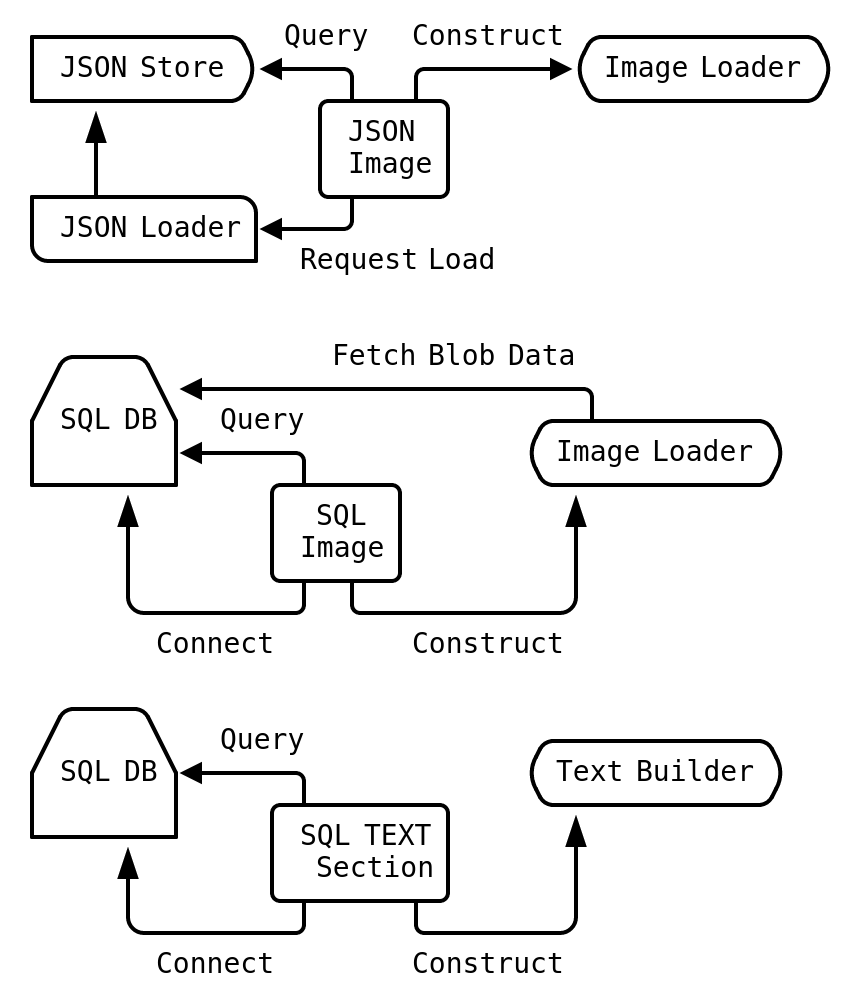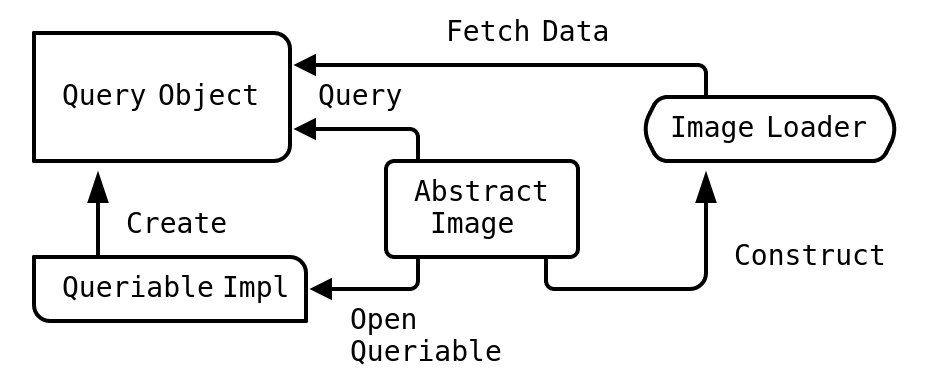Bridge
AKA: Handle/Body
In the presence of an abstraction of a set of classes and operations, such as
when using an
Perhaps your
The JSON-backed image object will:
- Open the file store, reading the JSON as a queriable object,
- Query it for the relevant data for the binary file path,
- Then, pass the file path to an image loader.
The SQL-backed image object will:
- Open a connection to the database,
- Query it for the relevant data for the binary data location,
- Then, pass the image data from a blob query into an image loader.
If we have a text section object, it will have some similar steps:
- Open a connection to the database,
- Query it for the relevant data for the text field,
- Then, pass the formatting and content objects to the text builder.

There can be many more abstractions and other possible storage solutions in a document. This becomes an N2 problem.
Instead of having the concrete objects do these steps, have a separate abstraction for the implementation details from the abstraction of the object using them.
The general abstract image object will:
- Open a query object via the implementation abstraction interface
- Query that object for the relevant data for the image loader call,
- Then, pass the result to an image loader.

So, we split the document element abstraction from parts of its implementation. We can use inheritance to refine new features and add new possibilities.
As another example, an ObjectInWorld can DrawSprite, but Character
inheriting from ObjectInWorld will use DrawSprite many times to build up a
representation. ObjectInWorld implements DrawSprite as
m_render->DrawSprite, and m_render is an ObjectInWorldImp type.
“We’re a designer-crafter team. The crafter is a carpenter; they work the wood. I’m the designer. I don’t work the wood, but I know how to direct the woodworker to create fabulous things.”